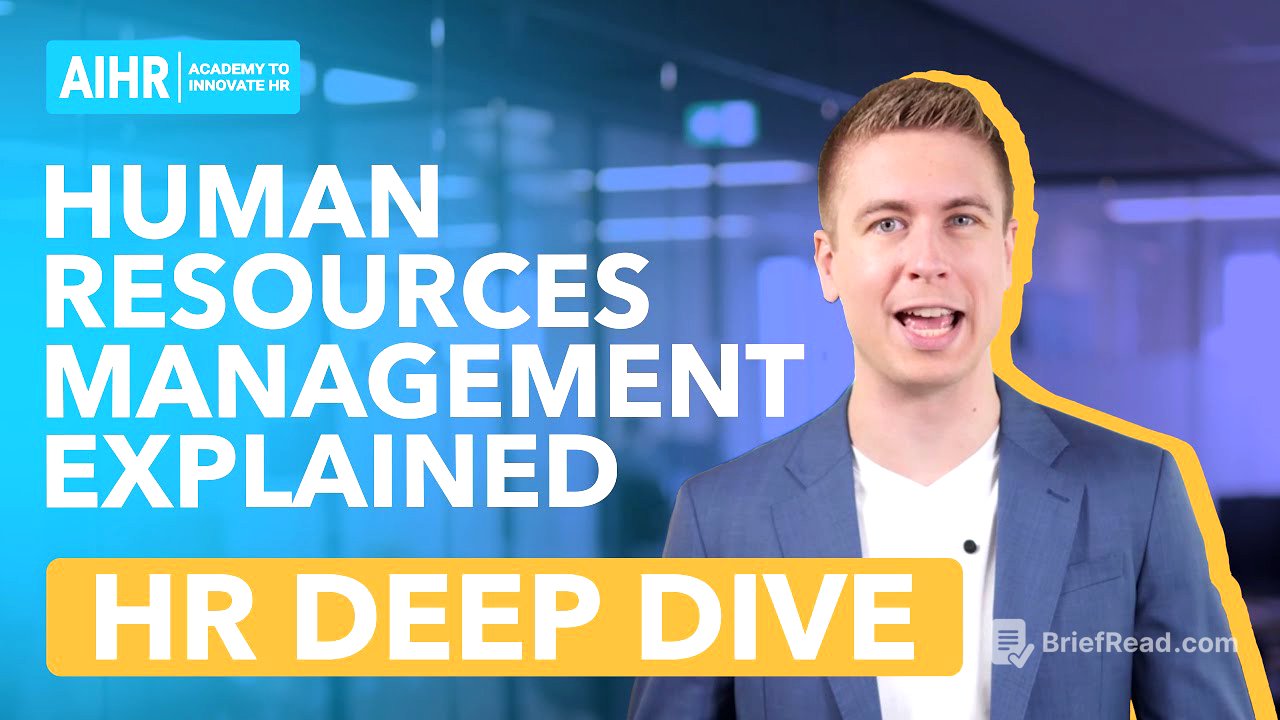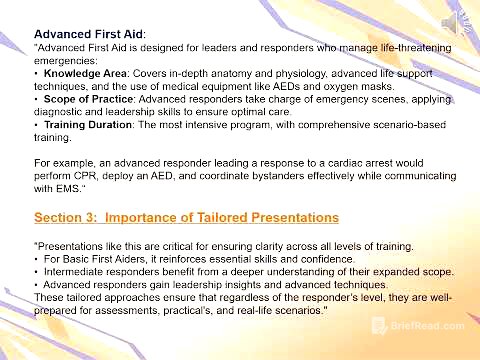TLDR;
This video provides an overview of Human Resource Management (HRM), including its definition, historical context, key activities, strategic impact, and future trends. It highlights the evolution of HRM from personnel management to a strategic function, emphasising its role in enhancing organisational performance through effective people management. The video also touches on the challenges and opportunities presented by emerging trends such as globalisation, automation, and the changing nature of work.
- HRM is the management of people to maximise their abilities and improve organisational performance.
- HRM has evolved from personnel management, focusing on compliance and efficiency, to a strategic function that impacts business outcomes.
- Key HRM activities include recruitment, performance management, culture management, learning and development, compensation and benefits, employee relations, and HR information and analytics.
Intro [0:00]
The video introduces the concept of Human Resource Management (HRM) and its importance in organisational success. It outlines the topics to be covered, including the definition of HRM, its historical origins, key activities, strategic impact, and future trends. The presenter encourages viewers to engage with the content by liking the video and subscribing to the channel for more HR insights.
What is Human Resource Management [0:51]
Human Resource Management is defined as the strategic management of people to enable them to perform at their best, thereby improving organisational performance. This involves empowering individuals with the necessary knowledge, skills, desires, and opportunities to succeed, which in turn contributes to the collective success of the organisation. The workforce is referred to as human resources, while human capital represents the economic value of an employee's experience and skills. Investing in human capital is beneficial, as organisations with knowledgeable, skilled, and experienced employees tend to be more successful.
A brief history of HRM [1:44]
The origins of HRM can be traced back to personnel management, which gained prominence during the two World Wars. The wars significantly altered the workforce, with women entering traditionally male-dominated roles. Personnel management during this period focused on compliance, efficiency, and the introduction of assessments like IQ testing. Over time, personnel management expanded to include various staffing functions such as hiring, firing, benefits administration, and collective bargaining. In the mid-1980s, the term Human Resource Management emerged, emphasising the implementation of policies to enhance organisational success. HRM shifted from a focus on efficiency to making a strategic impact on the business, driven by research demonstrating the positive correlation between investments in HRM practices and financial performance. This led to HR working alongside line managers, integrating with the business, and focusing on strategic people issues. The integration of HRM with business strategy became known as strategic Human Resource Management, positioning HRM as a cornerstone of the modern organisation.
HRM activities [5:46]
HRM encompasses a wide range of activities, with seven key areas highlighted. Recruitment and selection involve attracting and selecting the best candidates through methods like interviews, assessments, and reference checks. Performance management focuses on boosting employee performance through feedback, performance reviews, and succession planning to build a talent pipeline. Culture management involves building a culture that aligns with the organisation's goals, fostering a competitive advantage. Learning and development aims to equip employees with the skills needed for current and future roles, often supported by dedicated budgets for training and development activities. Compensation and benefits focuses on fairly rewarding employees through pay and benefits packages to keep them motivated and retained. Employee relations management involves maintaining positive relationships with employee groups, including collective bargaining and interactions with labour unions. Information and analytics involves managing HR technology and people data, often stored in a Human Resource Information System (HRIS), to drive data-driven decision-making and strategic impact.
Making an impact with Human Resources Management [9:11]
A challenge in HRM is overcoming the perception of being merely administrative rather than strategic. This can result in HR professionals being excluded from strategic decision-making processes. HRM activities can be categorised into hygiene factors and strategic differentiators. Hygiene factors are essential maintenance tasks that, if not performed, are noticeable and can cause dissatisfaction. Strategic differentiators, on the other hand, help build a competitive advantage through optimised culture, effective selection processes, and efficient onboarding. Strategic HR departments focus on both hygiene factors and strategic differentiators to boost organisational performance and contribute to the organisation's success.
Future trends [11:32]
The field of HRM is rapidly evolving, driven by several key trends. An aging workforce presents challenges related to sustainable employability and the need for upskilling and reskilling. Globalisation is expanding labour markets, enabling companies to access talent globally, with remote work becoming increasingly prevalent. The rise of gig work is disrupting traditional employment contracts, offering organisations greater flexibility. The increasing impact of data and analytics requires HR professionals to develop new skills in areas such as data analysis and HR technology. Automation is driving digital transformation and potentially automating administrative HR tasks. Task and industry-specific human capital is emerging, highlighting the importance of matching assignments to individuals with relevant experience. These trends create opportunities for HRM to reinvent itself and become a more strategic and impactful business function.









